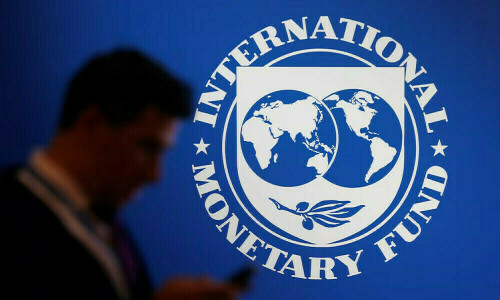Asian Central Banks Have Leeway to Ease Policy, Says IMF
WASHINGTON: According to a senior official at the International Monetary Fund (IMF), numerous Asian central banks possess the capacity to loosen monetary policy, thereby mitigating the impact of U.S. tariffs on their respective economies. This statement follows the IMF’s revised GDP projections for the export-oriented region.
In its most recent projections, the IMF anticipates a deceleration in Asia’s economic growth, estimating rates of approximately 3.9% and 4.0% for 2025 and 2026, respectively. These figures are a decline from the 4.6% growth observed in 2024 and fall short of previous forecasts.
Krishna Srinivasan, the director of the IMF’s Asia and Pacific Department, conveyed during a press conference that the ambiguity surrounding trade policies has notably intensified since January. This increase in uncertainty has further clouded the near-term economic prospects for the region.
Srinivasan noted that regional policymakers are confronted with intricate trade-offs as they navigate the economic instability resulting from U.S. President Donald Trump’s announcement on April 2, which imposed significant import tariffs on a multitude of nations globally.
However, the IMF representative pointed out that subdued inflationary pressures afford Asian economies some flexibility regarding interest rates.
“In a region where inflation is predominantly at or below the intended level, there exists an opportunity for easing monetary policy to buffer the external shocks in numerous countries,” Srinivasan stated.
Asian nations experienced some of the most substantial U.S. tariffs on a global scale, with Cambodia facing tariffs of 49%, Vietnam at 46%, and Thailand at 37%.
Although Trump subsequently suspended the implementation of these tariffs, he escalated duties on China, the world’s second-largest economy. In response, Beijing has enacted its own set of tariffs on the United States.
Srinivasan emphasized that Asia is particularly susceptible to shocks in trade policy due to the openness of its economies and its crucial role in the global supply chain.
“The convergence of heightened exposure to the U.S. market and considerable global policy uncertainty introduces a vulnerability for the region,” he explained.
“The risks are skewed towards the downside.”
Srinivasan added that instability in financial markets, potentially leading to further disruptions in capital flows and investment, presents an additional risk.
While adaptable exchange rates could serve as a crucial safeguard against these shocks, he suggested that currency intervention might be necessary in situations of heightened financial market turbulence.



Comments (0)
No comments yet. Be the first to comment!
Leave a Comment